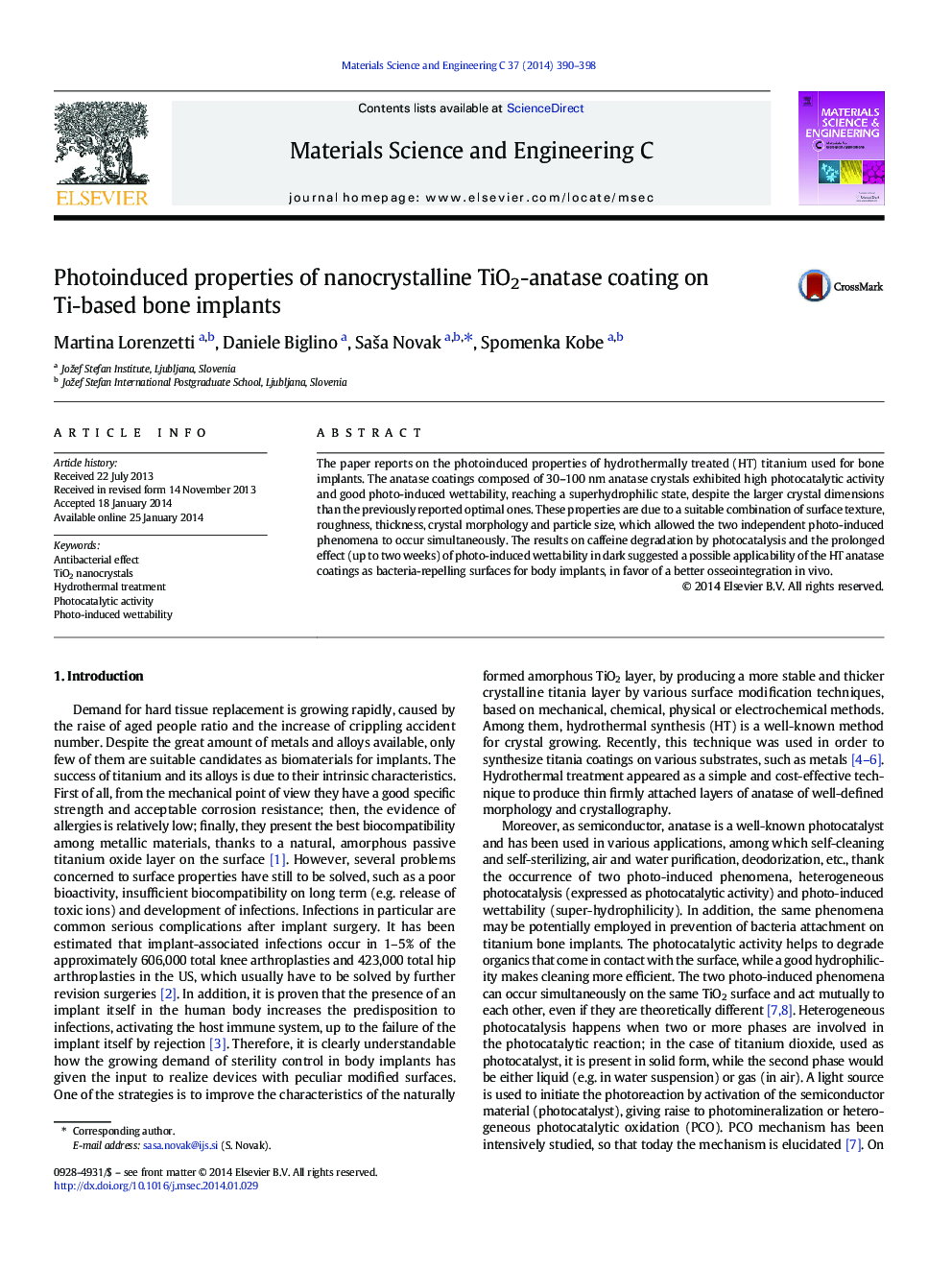| Article ID | Journal | Published Year | Pages | File Type |
|---|---|---|---|---|
| 1429024 | Materials Science and Engineering: C | 2014 | 9 Pages |
•HT-anatase coatings show proper surface features to allow photo-induced phenomena.•HT-anatase coatings exhibit high photocatalytic activity (comparable to TiO2 P25).•Photo-induced wettability occurs, despite larger crystal sizes than in literature.•Prolonged effect (up to two weeks) of photo-induced wettability in dark is observed.•Results represent the first step for the fabrication of bacteria-repelling surfaces.
The paper reports on the photoinduced properties of hydrothermally treated (HT) titanium used for bone implants. The anatase coatings composed of 30–100 nm anatase crystals exhibited high photocatalytic activity and good photo-induced wettability, reaching a superhydrophilic state, despite the larger crystal dimensions than the previously reported optimal ones. These properties are due to a suitable combination of surface texture, roughness, thickness, crystal morphology and particle size, which allowed the two independent photo-induced phenomena to occur simultaneously. The results on caffeine degradation by photocatalysis and the prolonged effect (up to two weeks) of photo-induced wettability in dark suggested a possible applicability of the HT anatase coatings as bacteria-repelling surfaces for body implants, in favor of a better osseointegration in vivo.
Graphical abstractFigure optionsDownload full-size imageDownload as PowerPoint slide
